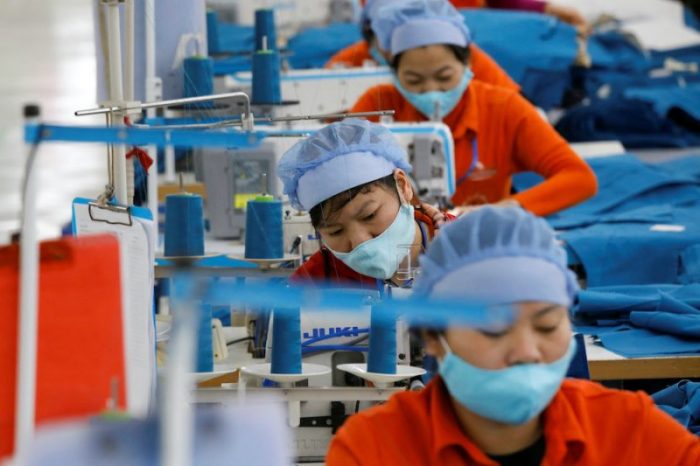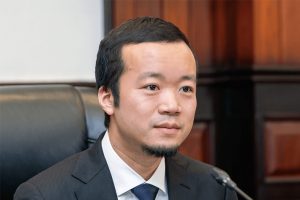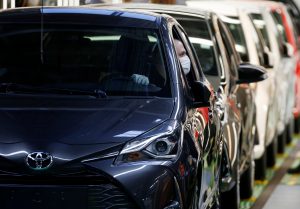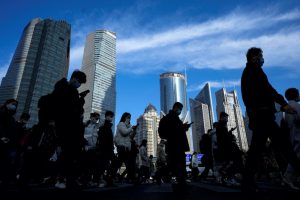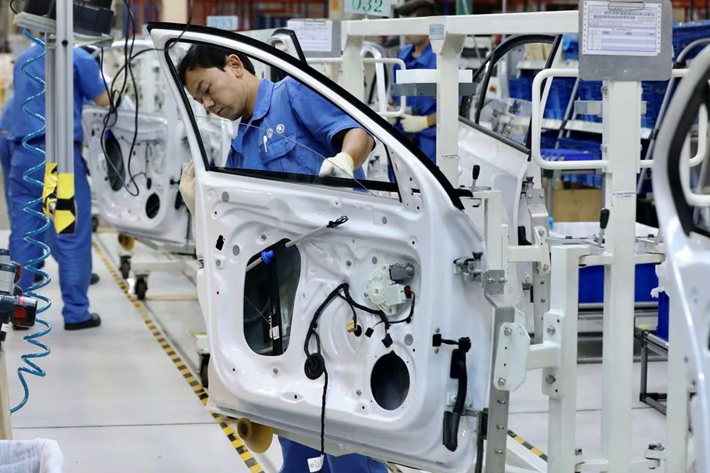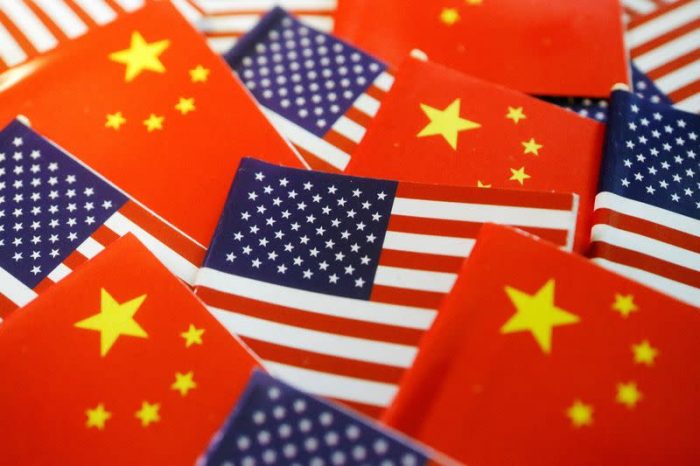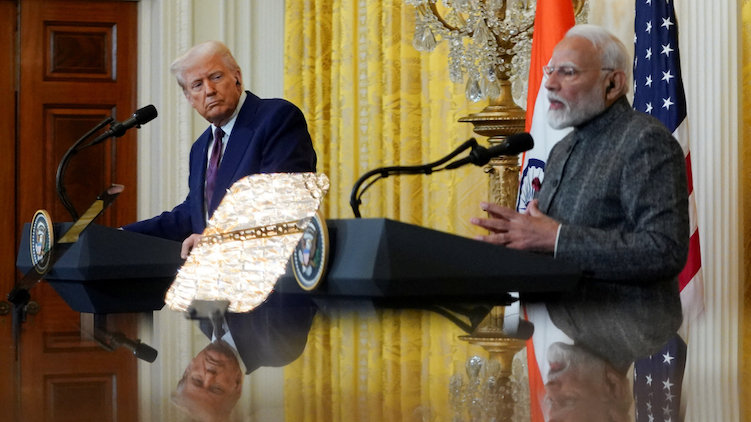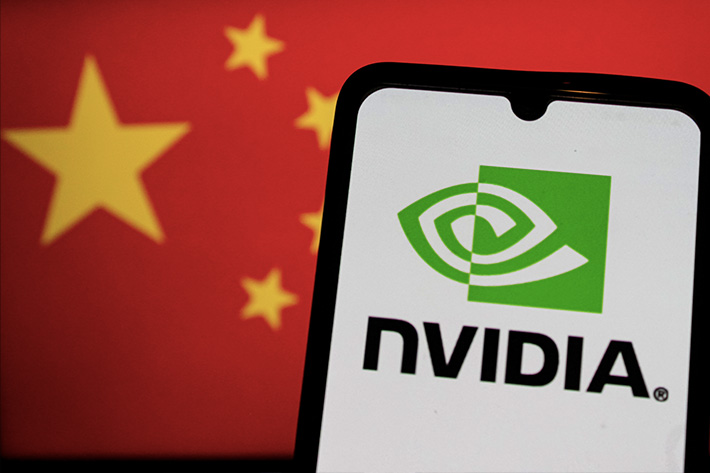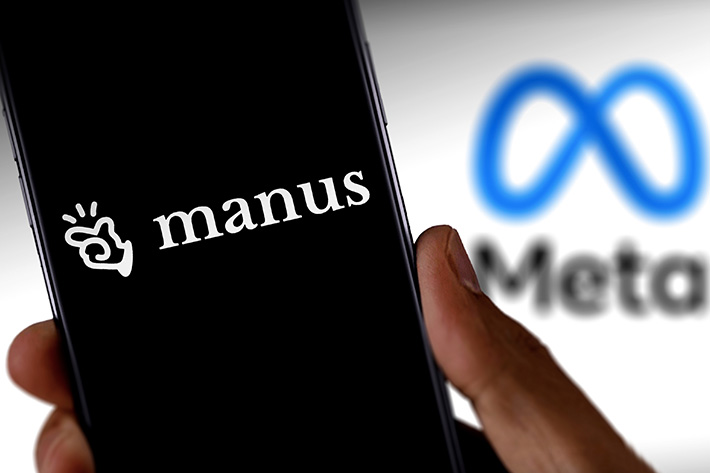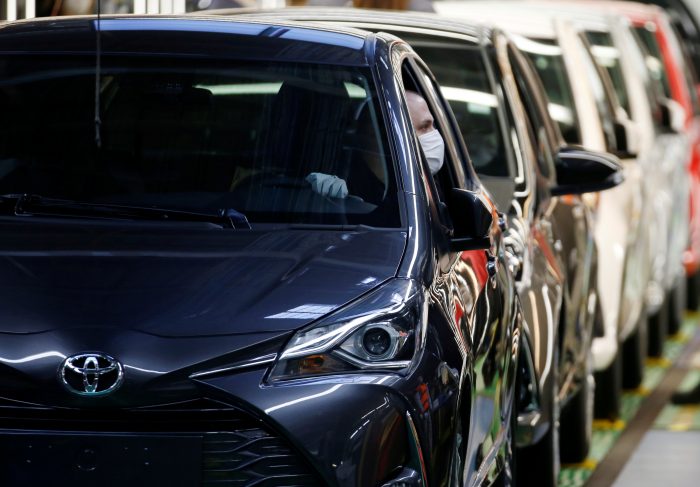Chinese officials warned on Thursday that they would strike back if the US-Vietnam trade deal was found to have negative impacts on its dealings.
The Commerce Ministry in Beijing said it was “conducting an assessment” of the framework agreement, notably the hefty tariff that Washington has said it will impose on the trans-shipment of goods through Vietnam.
US President announced the trade agreement on Wednesday, which will put a 20% tariff on many Vietnamese exports, while goods trans-shipped from third countries face a 40% levy and Vietnam can import US products with a 0% tariff.
ALSO SEE: China’s Criticism of Price Wars Sheds Light on Xi’s ‘Waning’ Power
“We firmly oppose any party striking a deal at the expense of China’s interests,” the ministry said.
“If such a situation arises, China will take resolute countermeasures to safeguard its legitimate rights and interests,” it added.
The response from Beijing response is no surprise – it warned on Saturday that it opposes any country signing tariff deals with the US that erode China’s interests.
Analysts say the levy on exports ‘trans-shipped’ via Vietnam is clearly targeted at goods made in China.
“The key lesson for other countries from this deal, and that agreed previously by the UK, is that they will be expected to curtail some trade with China,” Capital Economics’ chief Asia economist Mark Williams and senior Asia economist Gareth Leather said in a note.
“That will be seen as a provocation in Beijing, particularly if similar conditions are included in any other deals agreed over coming days.”
“This could certainly lead to a renewed escalation of US-China trade tensions if the US insists on very stringent restrictions by third parties on imports from China,” Frederic Neumann, chief Asia economist at HSBC, told the FT, which noted that trans-shipment is difficult to trace and the Trump Administration has not revealed how it classifies the practice.
Indeed, the US strategy to pressure other countries to impose duties on Chinese goods was revealed in April, when the Wall Street Journal reported that the US planned to pressure more than 70 countries to reduce trade ties with China.
Beijing will be closely watching US trade deals with other countries in Southeast Asia.
Trump, Hanoi happy
Meanwhile, President Trump and Vietnam appear happy to have reached an agreement.
“It is my Great Honor to announce that I have just made a Trade Deal with the Socialist Republic of Vietnam,” Trump said on Truth Social after speaking with Vietnam’s top leader, To Lam. There is speculation he may visit the White House next week.
Trump’s announcement comes just days before a July 9 deadline before he ramps up tariffs on most imports, one of the Republican’s signature economic policies.
Under that plan, announced in April, US importers of Vietnamese goods would have had to pay a 46% tariff.
Details on the deal are scant. It was not clear which products Trump’s 20% tariff would apply to, or whether some would qualify for lower or higher total duties.
Also left to later discussion was how the new trans-shipment provision, aimed at products largely made in China and then labelled “Made in Vietnam,” would be implemented and enforced.
The Vietnamese government did not confirm the specific tariff levels in a statement celebrating what it described as an agreement on a joint statement about a trade framework.
Vietnam would commit to “providing preferential market access for US goods, including large-engine cars,” the government in Hanoi said.
A deal between the two countries would be a political boost for Trump, whose team has struggled to quickly close deals with Washington’s biggest trading partners ahead of the deadline.
While the administration has teased a forthcoming deal with India, truce agreements reached earlier with Britain and China were limited in scope. But talks with Japan, the United States’ sixth-largest trading partner and closest ally in Asia, appear to have hit roadblocks.
Surge in ‘Vietnamese’ exports to the US
US is Vietnam’s largest export market and the two countries’ growing economic, diplomatic and military ties are a hedge against Washington’s biggest strategic rival, China. Vietnam has worked to retain close relations with both superpowers.
Shares of major US apparel and sportswear makers including Nike, Under Armour and North Face maker VF Corp closed higher on Wednesday on the news.
Lam also asked Trump for the US to recognize Vietnam as a market economy and remove restrictions on the exports of high-tech products to the country, Vietnam said. Those changes have long been sought by Hanoi.
The White House and the Vietnamese trade ministry did not respond to requests for additional comment.
US trade with Vietnam has exploded since Trump imposed tariffs on hundreds of billions of dollars in Chinese goods in his first term from 2017-2021, though almost all of it in the form of goods to the United States from Vietnam as importers sought workarounds to avoid levies on goods made in China.
Since 2018, Vietnam’s exports are up nearly threefold from less than $50 billion that year to about $137 billion in 2024, Census Bureau data shows. US exports to Vietnam are up only about 30% in that time – to just over $13 billion last year from less than $10 billion in 2018.
“‘Transshipping’ is a vague and often politicized term in trade enforcement,” said Dan Martin, business adviser at Dezan Shira & Associates, on LinkedIn. “How it’s defined and how it’s applied in practice will shape the future of US-Vietnam trade relations.”
Trump announced a wave of tariffs for countries around the world on April 2, before pausing the implementation of most duties until July 9. More than a dozen countries are actively negotiating with the Trump administration to avoid a steep spike in tariffs on their exports.
Britain accepted a 10% US tariff on many goods, including autos, in exchange for special access for aircraft engines and British beef.
Like the agreement struck with Britain in May, the one with Vietnam resembles a framework rather than a finalized trade pact.
Tariffs truce with China
China and the United States also came to a truce in a tit-for-tat tariff battle in which Beijing restored American access to some rare-earth minerals, but the two sides left most of their disagreements to later negotiations.
“Had Trump stuck with 46%, much higher than the current tariff on China, Vietnam feared it would be disadvantaged by its competitors, especially in Southeast Asia,” said Murray Hiebert, a senior associate with the Southeast Asia program at CSIS, a think tank.
“This likely would have dented Vietnam’s trust in the US and it might have toned down some of its security cooperation with Washington.”
Dispute on farm goods delays deal with India
Meanwhile, US and India trade negotiators were pushing on Wednesday to try to land a tariff-reducing deal ahead of President Donald Trump’s July 9 negotiating deadline, but disagreements over US dairy and agriculture remained unresolved, sources familiar with the talks said.
Trump threatened a 26% duty on Indian goods as part of his April 2 reciprocal tariffs, which were temporarily lowered to 10% to buy time for negotiations.
Sources in India’s commerce ministry said that a trade delegation from India was still in Washington a week after arriving for talks that started last Thursday and Friday.
They may stay longer to conclude a deal, but without compromising on key agricultural and dairy issues, the sources said, adding that it was unacceptable to lower tariffs on genetically modified corn, soybeans, rice and wheat grown in the US.
Prime Minister Narendra Modi’s government “doesn’t want to be seen as surrendering the interests of farmers – a strong political group in the country,” one of the sources said.
However, India is open to lowering tariffs on walnuts, cranberries and other fruits, along with medical devices, autos and energy products, the source said.
A US source familiar with the talks said that there were “indications that they are close” and negotiators have been told to prepare for a potential announcement.
The source added that “there’s been intense and constructive effort to close a deal. I think both sides understand the strategic importance, beyond the economic importance, of closing a deal.”
Trump echoed those sentiments on Tuesday, telling reporters on Air Force One that he could reach a deal with India that would cut tariffs for both countries and help American companies compete in India’s market of 1.4 billion consumers.
At the same time, Trump cast doubt on a potential deal with Japan, saying he may impose a tariff of 30% or 35% on Japanese goods, well above the 24% duty rate he announced on April 2. Japan is seeking to lower separate 25% automotive and steel tariffs that Trump imposed.
- Jim Pollard with Reuters
NOTE: Further text was added to this report on China’s response to the US-Vietnam agreement and the headline amended on July 3, 2025.
ALSO SEE:
Vietnam Eyes Framework Trade Deal With US by Tariff Deadline
US Wants Vietnam To Cut Trade With China As Part Of Tariff Deal
Survey Shows Business is Booming in India, Record Export Orders
S Korea to Discuss Concern Over Curbs on Chipmakers in China
Tariff Talks With US Still ‘in a Fog,’ Japan’s Trade Negotiator Says
Firms Underestimating Risks From Carbon-Fuelled Climate Change
Trade Truce Done With 55% Tariffs on China Exports, Trump Says
Vietnam Scrambles to Chop Trade Levies As US Tariffs Loom
US, Vietnamese Firms Sign Billions in Energy, Mineral Deals
Chipmakers Flee China, Shift to Vietnam Amid US-China Heat




